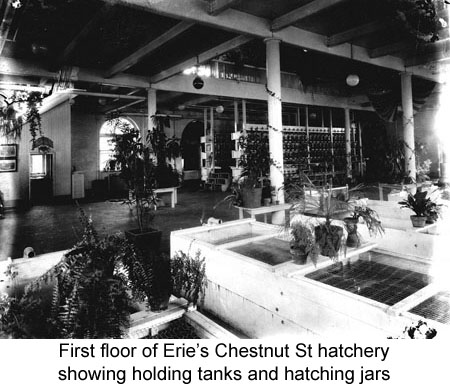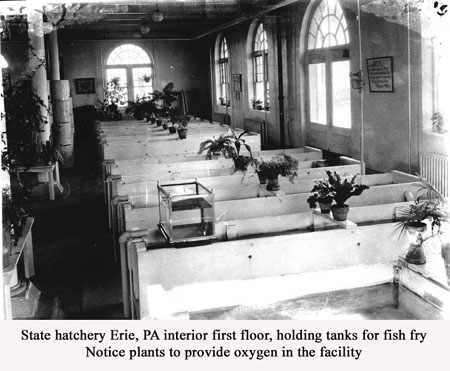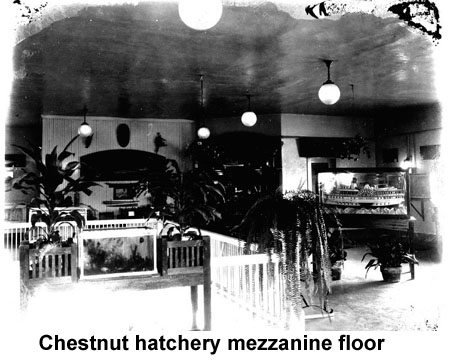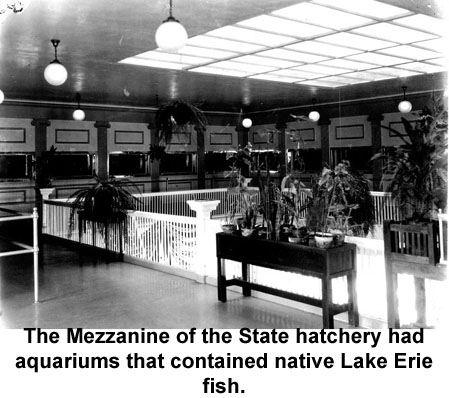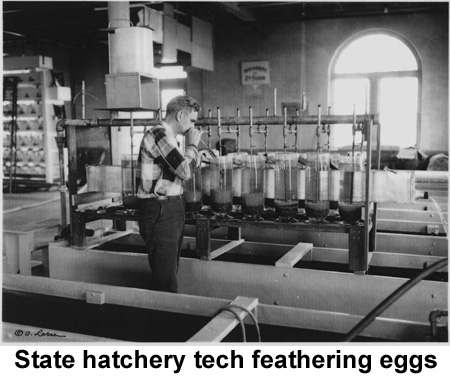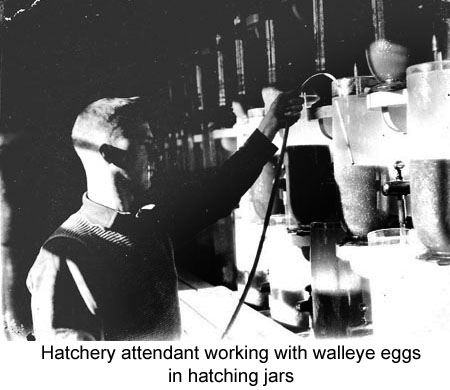
Save Our Native Species Inc.
S.O.N.S. of Lake Erie Fishing Club
(A501C (3) not for profit organization)
|
Home |
|
|
Contact
Information:
Treasurer
|
Early Pennsylvania Fish Commission Hatcheries in Erie
Erie's first fish hatchery
In 1885 the PA Fish Commission received a $5000 appropriation to construct a fish hatchery in Erie. It was constructed on an 80’ X 80’ lot at the corner of Second and Sassafras Streets. The 30’ X 50’ building was of the Erie of a neat design that accommodated five tables of hatching jars with an and an adjacent office on the first floor. The second floor housed the sleeping and living quarters as well as a tank room with a tank which had a capacity of 1,200 gallons of water. By 1886 the facility produced 14,625,000 whitefish fry. The property also contained two rearing ponds of allowing the fry to achieve some growth before their stocking.
The property was surrounded by a wrought iron fence that resembles the one that surrounds an the empty lot at West 2nd and Sassafras today.
Water to the Erie hatchery was provided free of charge by the Erie Waterworks for the first two years.
The purpose of the hatchery was to support local commercial fishing and fishermen supported the hatchery by purchasing commercial fishing licenses. Legislation was enacted in 1901 making it mandatory to purchase a license to engage in commercial fishing. In 1903 the cost of operating the Erie hatchery was $3000. $2000 in license fees was collected making the operation nearly self-sustaining.
Eggs and roe for the hatchery operation were obtained locally by hatchery crews operating off of the PAFC boat the “Commodore Perry” as well as hatchery operations in Ohio, Ontario and Michigan. In later years Erie’s hatchery workers accompanied commercial fishermen on their boats and obtained eggs and spawn from harvested fish.
While the most important species raised at the local hatchery were whitefish, herring and yellow pike, Erie’s hatchery was the first to artificially propagate blue pike. Budgetary constraints led to the closure in 1887, but the operation returned in 1889 when the combined number of whitefish, blue and yellow pike, and perch stocked was 63 million hatchlings.
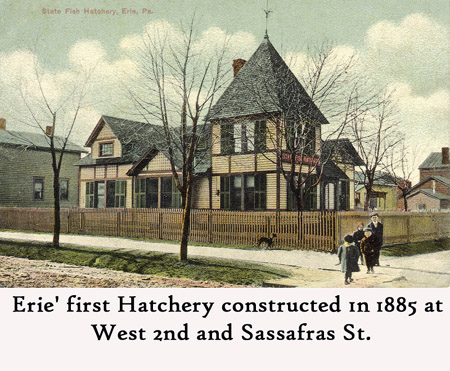
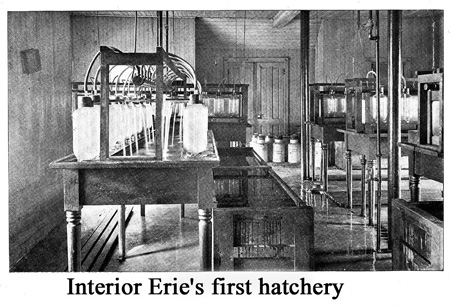
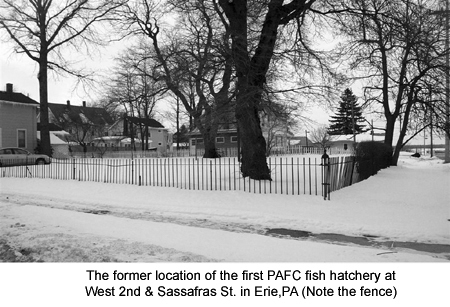
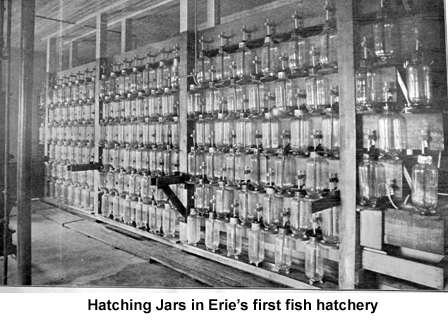
%20copy.jpg)
The first hatchery outgrew its physical quarters 1914. The Pennsylvania Fish Commission approved the construction of a new Erie hatchery. Under the supervision of superintendent Philip Hartman the new hatchery was constructed. It was a 60’ x 80’ two story brick, sandstone and concrete building, built on the NW corner of the Waterworks Park at the foot of Chestnut St. It was furnished with electricity and heated by steam. The first floor of the building housed batteries of hatching jars and 13 fry tanks. The interior was well lit by abundant windows and electric lights at night. The second floor was a mezzanine that surrounded the hatching floor. This area provided a visitors gallery that included large aquariums to display the fish of Lake Erie. The ceiling consisted of skylights that provided more light. It was built to conform with the architecture of the Waterworks buildings also on the property.
Part of the impetus for the move was a 1912 water-borne Typhus epidemic which ultimately motivated the chlorination of Erie’s municipal water. This made it imperative to relocate the hatchery to the waterfront where untreated bay water could be accessed.
The following
excerpt from the 1914 edition of the PAFC annual report describes the
feeling of necessity for the continued maintenance of an Erie hatchery.
“While Pennsylvania has only forty miles of shoreline of Lake
Erie, the fishermen of Erie have millions of dollars invested in the fish
business. They set hundreds of miles of nets every day, and have made Erie
the largest fresh water market in the world. This constant fishing would
long since have depleted the lake and fishing would have become a lost
art.”
The state hatchery at the foot of Chestnut Street continued
operation through the 1950s and the crash of several species.
The hatchery finally closed its doors in the 1960s in favor of
other more modern facilities. The hatchery building is in use today as the
headquarters of Erie’s Water Authority.
In 1985 a new hatchery was constructed and is now operated by the S.O.N.S. of Lake Erie.
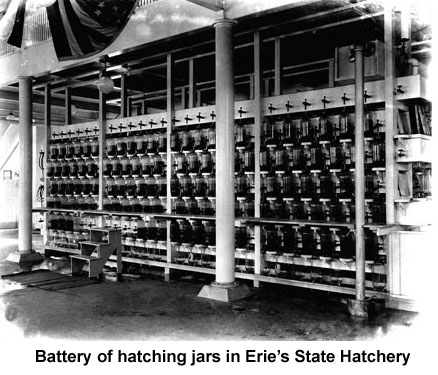 |
